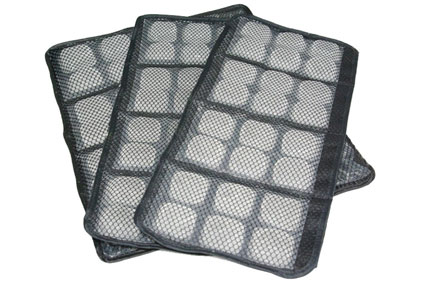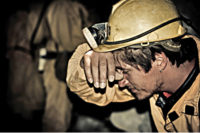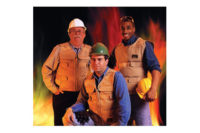Question #1: Phase Change Vests can cool between 4 and 12 hours – True or False?
Claims of effectiveness and cooling time of PCM vary wildly.
Many factors come into play when it comes to how effective PCM vests are and how long they will provide cooling protection from heat stress. How much personal protection is the worker wearing? How hot is the work environment? How long will the worker need cooling?
To help answer the question about cooling times, let’s first look at how heat transfers and how PCM works. In simple terms, there are three physical facts:
1. Heat energy always moves from a warmer place to a cooler place.
2. The rate that the heat energy moves is determined by the temperature difference between the two places. The greater the temperature difference, the greater the heat flow.
3. A phase change material maintains a constant temperature during the phase change no matter what the heat
conditions are,
hot or cold.
The facts show that PCM used in a micro-climate such as a hazardous materials suit, which traps body heat even with minimal protection, will transfer heat more rapidly than use of no PPE at all. Workers wearing protective suits or even mascot costumes will only experience cooling for 20 minutes.
Question #2: Phase Change Material inserts are all the same – True or False?
Phase change material inserts can be found in three different forms:
1. Inorganic PCM are engineered hydrated salt solutions made from natural salts with water. The chemical composition of salts varies in the mixture to achieve required phase-change temperatures. Special nucleating agents are added to the mixture to minimize phase-change salt separation and to minimize super cooling, which are otherwise characteristic of hydrated salt PCM. Salt hydrates are non-toxic, non-flammable and economical.
2. Bio-based PCM are organic materials that are naturally existing fatty acids such as vegetable oil. Based on their chemical composition, their phase-change temperature can vary. These products are non-toxic, non-corrosive and have infinite life cycles. However, they can be expensive and flammable at high temperatures.
3. Organic PCM are naturally existing petroleum bi-products that have their unique phase-change temperature. These products are manufactured by major petrochemical companies so their availability could be limited. They can be toxic, flammable and expensive. They have infinite life cycles and the price varies with changes in petroleum prices globally.
Question #3: Phase Change Materials are non-toxic – True or False?
There are many variations of phase change material inserts and vests on the market today. Some phase change materials are suspended in water and are relatively nontoxic. Others are hydrocarbons or other flammable materials and are toxic. As such, PCMs must be selected and applied very carefully, in accordance with fire and building codes and sound engineering practices. Because of the increased fire risk, flame spread, smoke, potential for explosion when held in containers and liability, it may be wise not to use flammable PCMs within residential or other regularly occupied buildings.
Most inserts are non-toxic inorganic and organic products engineered for thermal energy storage. Energy is stored as a combination of sensible and latent heat. During their process of phase change between a solid state and a liquid state, thermal energy is absorbed or released at a constant temperature which provides the unique capability to control temperature during the process of thermal energy storage.
Question #4: Phase Change Vests mitigate risk of heat related injuries – True or False?
Although there are claims of cooling temperatures in the mid-fifties, phase change materials used for cooling vests generally provide a constant cooling temperature between 59°F (15°C) and 65°F (18°C). How much cooling is needed to mitigate risk of heat-related injuries? The answer to this question is based on many factors including ambient temperature, relative humidity, wind speed, amount and type of PPE, as well as the individual’s physiological makeup and acclimation to the environment.
A human will generate from around 70 watts to 870 watts, depending on the amount of physical activity undertaken. Phase change materials provide a net torso cooling rate of 59.5 watts[1], far below the amount of cooling watts needed to prevent heat-related injuries with only light to moderate activity.
Question #5: Phase Change Vests can actually cause heat-related injuries if used improperly – True or False?
Phase change materials are encapsulated in a variety of ways depending on the manufacturer of the inserts. As phase change materials perform best in small containers, they are usually divided in cells. The most common material used for encapsulation is polyurethane plastic. As the heat transfers from the warmer body to the phase change insert, the phase change material will become a liquid and warm to the temperature of the environment around it. As this happens, the inserts are no longer providing cooling and the plastic is actually trapping body heat and further increasing body temperature. As the body temperature increases, so does the phase change material, causing a spiraling effect.
Answers: (1) False. (2) False. (3) False. (4) False. (5) True.
References
1 Thermal Manikin Testing of a Micro-Climate Cooling System, Navy Clothing & Textile Research Facility Technical Report July 1998.



